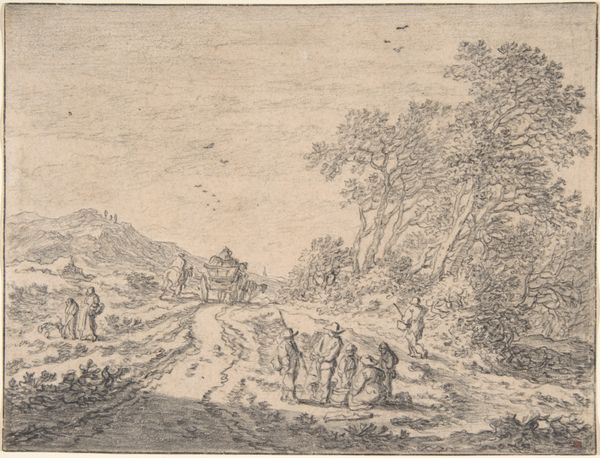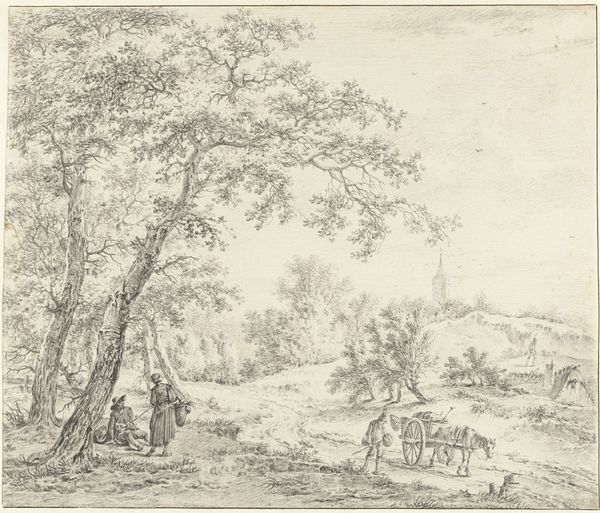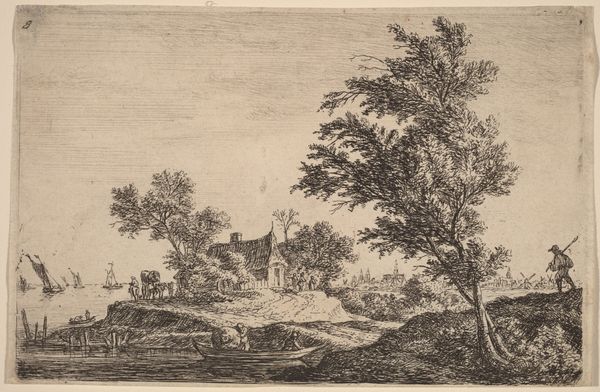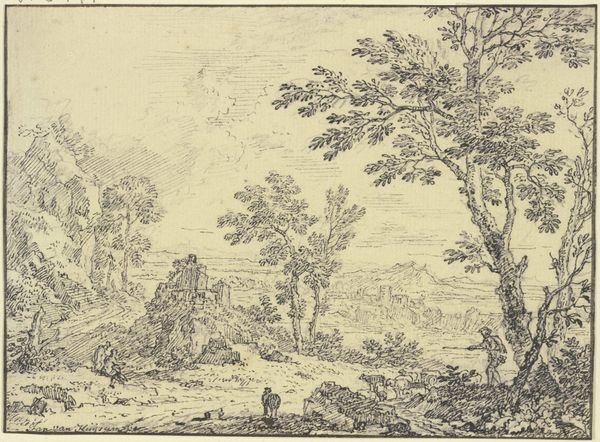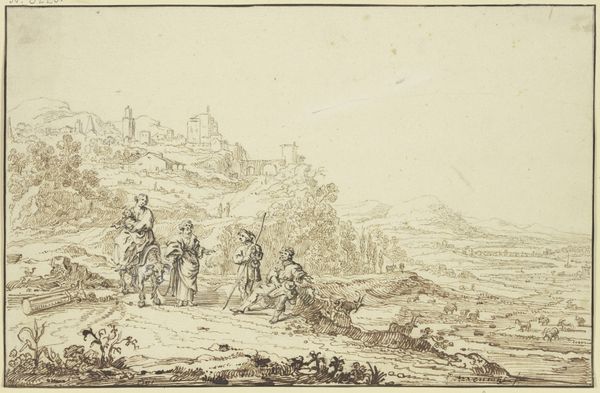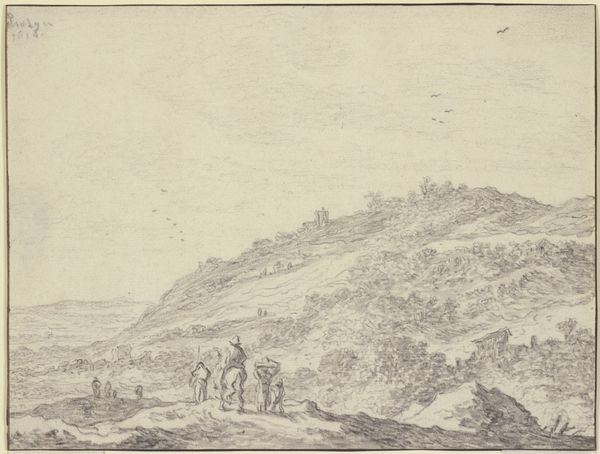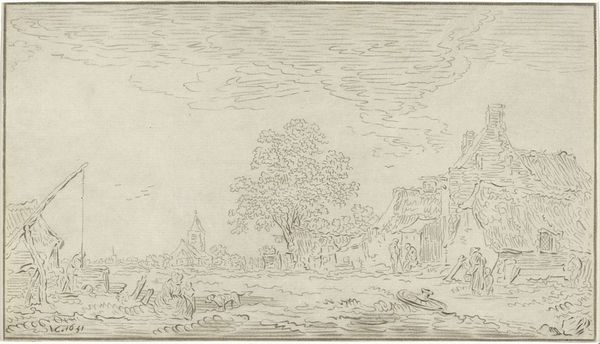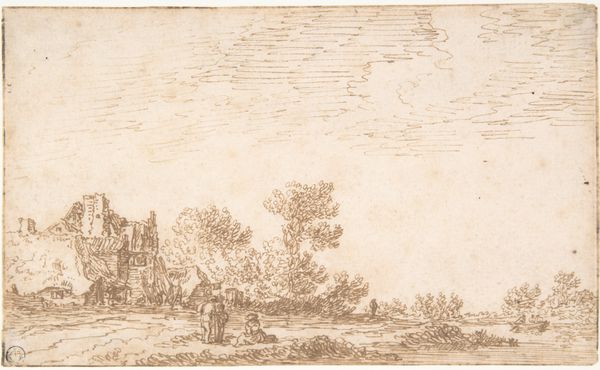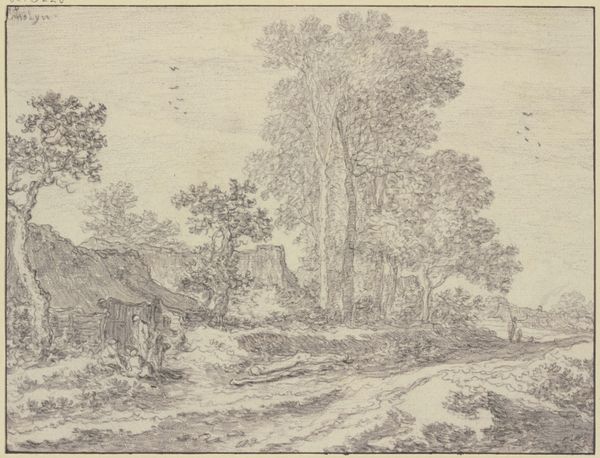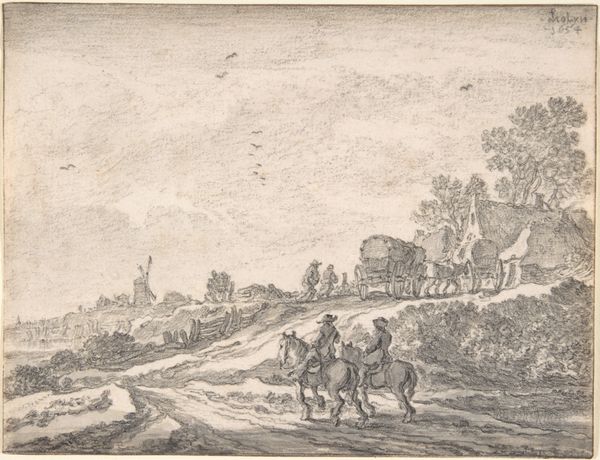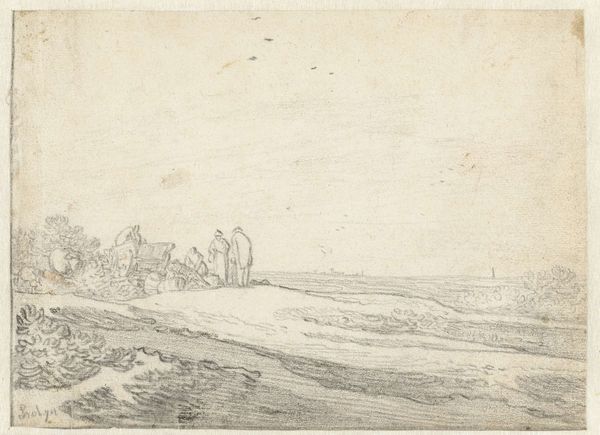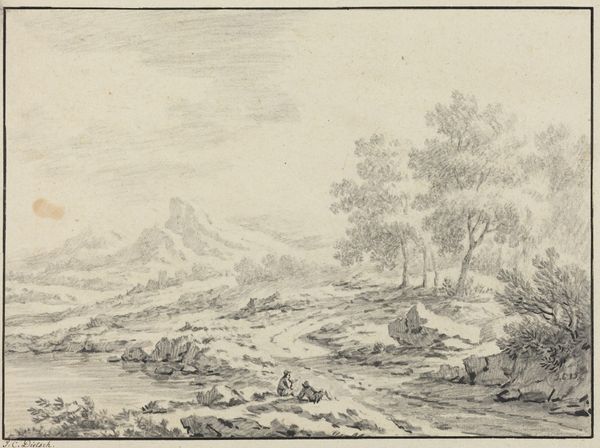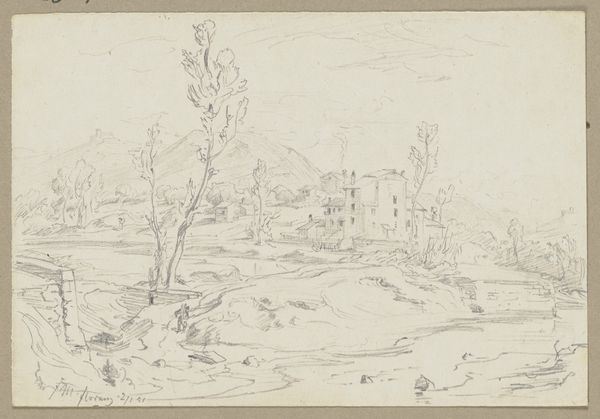
Wagen, Reiter und Fußgänger auf abschüssigem Terrain, im Vordergrund eine Gruppe ruhender Wanderer 1655
0:00
0:00
drawing, ink, pencil, chalk
#
drawing
#
baroque
#
landscape
#
ink
#
pencil
#
chalk
Copyright: Public Domain
Curator: Welcome. Before us is "Wagen, Reiter und Fussgänger auf abschüssigem Terrain, im Vordergrund eine Gruppe ruhender Wanderer"—Carriage, Rider, and Pedestrians on Sloping Terrain, with a Group of Resting Travelers in the Foreground—a drawing made around 1655 by Pieter Molyn the Elder. Editor: It’s beautiful. Very soft. I’m struck by how economically Molyn uses chalk, pencil, and ink to convey so much texture and depth. The subtle shading really suggests the slope of the terrain, you know? Curator: Yes, the composition and material choices reflect the Dutch landscape tradition, a burgeoning genre at the time. Artists were breaking from strictly religious or mythological subjects and starting to observe and represent their immediate environments. Molyn played a significant role in shaping that. Editor: Absolutely. Look at how the resting travelers in the foreground are positioned. There's this careful depiction of their worn garments and how they’re interacting with the earth. It is so matter-of-fact, less focused on portraying ideal forms and more on showing the everyday realities of travel. Curator: Travel and trade were indeed central to the Dutch Golden Age. Molyn gives us a glimpse into the lives of various social strata moving through this landscape, reflecting the social and economic activity of the era. The placement of figures along a sloping horizon almost certainly communicates a visual hierarchy. Editor: The medium contributes so much. Imagine if this was an oil painting. The directness of the chalk and ink speaks to its function. Probably made in preparation for something larger, a tangible artifact that comes from workshop practices. Curator: That is precisely how drawings functioned for artists during this time. This work allows a direct connection to Molyn's process, bypassing the layers of patronage and public expectations that often shaped final artworks. He’s thinking through something in real-time. Editor: Well said. It reminds us that these grand paintings we see in galleries have a long, materially grounded trajectory. Curator: It serves as a compelling testament to the period, showing the artist at work and also, crucially, the role that art played in shaping a new vision of the Dutch Republic. Editor: I will look at baroque landscapes in a different way now. I really love the intersection of labor, nature, and art represented here. Curator: An excellent piece to contemplate the artistic ingenuity behind some of history’s iconic moments and movements.
Comments
No comments
Be the first to comment and join the conversation on the ultimate creative platform.
